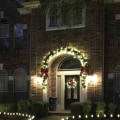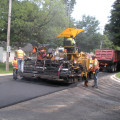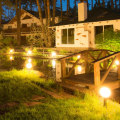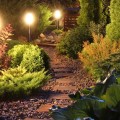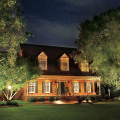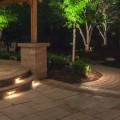LED landscape lighting in Scottsdale, Arizona has revolutionized outdoor lighting, offering homeowners and businesses an energy-efficient alternative to traditional incandescent and halogen lights. One of the most common questions people have when considering LED lights for their outdoor spaces is whether they consume a lot of electricity. The simple answer is no—LED landscape lighting in Scottsdale, Arizona is designed to use significantly less energy compared to older lighting technologies while providing exceptional illumination. Whether you are enhancing your garden, lighting up walkways, or creating an ambiance around your pool or patio, LED lights in Scottsdale, Arizona are an economical and sustainable solution.
Energy Efficiency of LED Landscape Lights
LED, which stands for "light-emitting diode," is a modern lighting technology that consumes up to 80-90% less electricity than traditional incandescent bulbs. This remarkable energy efficiency is due to how LEDs produce light. Unlike incandescent bulbs, which generate light by heating a filament (wasting a large portion of energy as heat), LEDs emit light through a process called electroluminescence. This means they require far less energy to produce the same amount of light, making them ideal for continuous use in landscape lighting.
For example, a standard 60-watt incandescent bulb can easily be replaced with a 6 to 8-watt LED bulb that provides the same brightness. In landscape lighting, where multiple fixtures may run for several hours each night, the energy savings quickly add up. Whether you’re illuminating trees, garden features, or pathways, using LEDs ensures minimal energy consumption without sacrificing performance.
Comparing LED Lights to Traditional Options
When considering electricity usage, LED lights significantly outperform traditional options like halogen or CFL (compact fluorescent lights). Halogen lights, often used in older landscape lighting systems, consume more energy and have a much shorter lifespan. A halogen fixture that uses 50 watts of electricity can easily be replaced with a 5-watt LED light that delivers equal or better brightness. Over time, the difference in electricity consumption translates to substantial savings on energy bills.
CFLs are slightly more efficient than halogens but still fall short when compared to LEDs. CFLs also take time to warm up and achieve full brightness, which can be inconvenient for outdoor settings where instant illumination is often required. LEDs, on the other hand, turn on instantly and maintain consistent brightness, making them perfect for security lighting and aesthetic purposes in landscapes.
LED Landscape Lights and Operating Costs
Because of their low energy consumption, LED landscape lights have a minimal impact on electricity bills. For example, if you run ten 8-watt LED lights for 6 hours a day, the total energy consumed would be approximately 0.48 kilowatt-hours (kWh) per day. In monetary terms, assuming an average electricity cost of $0.13 per kWh, this amounts to less than $2 per month—a fraction of what it would cost to operate traditional lighting systems.
Additionally, LEDs have a much longer lifespan, often lasting 25,000 to 50,000 hours or more. This extended life means fewer replacements and lower maintenance costs over time, further contributing to their cost-effectiveness. While the initial investment in LED fixtures may be higher, the long-term savings on energy and replacement costs make them an excellent choice for homeowners and businesses alike.
Environmental Benefits of LED Lights
In addition to their energy efficiency, LED landscape lights are also environmentally friendly. Lower energy consumption reduces greenhouse gas emissions associated with electricity generation, making LEDs a sustainable choice for outdoor lighting. Furthermore, LEDs contain no harmful substances like mercury, which is commonly found in CFLs, making them safer for the environment and easier to dispose of responsibly.
By switching to LED landscape lighting, homeowners can significantly reduce their carbon footprint while enjoying beautifully illuminated outdoor spaces. For those who value sustainability and safety, combining LED lights with high-quality outdoor solutions, such as fencing from www.primepoolfencing.com.au, ensures a cohesive, eco-friendly, and secure outdoor environment.
Customizing Your LED Landscape Lighting
LED landscape lights are highly versatile and can be tailored to suit any outdoor space. They come in a variety of styles, colors, and brightness levels, allowing homeowners to create stunning effects for their gardens, patios, and pools. LEDs are also compatible with timers, dimmers, and smart home systems, enabling users to control energy usage efficiently.
For instance, motion sensors and timers can ensure that lights are only active when needed, further minimizing energy waste. Solar-powered LED fixtures offer another layer of efficiency, combining the benefits of renewable energy with LED technology for a completely cost-free lighting solution.
Conclusion: Minimal Energy, Maximum Impact
LED landscape lights are a game-changer for outdoor lighting, offering stunning illumination with minimal energy consumption. Their superior energy efficiency, long lifespan, and cost-effectiveness make them the ideal choice for homeowners and businesses looking to enhance their landscapes without driving up electricity bills. Compared to traditional halogen or CFL options, LED lights use a fraction of the power while delivering consistent and reliable performance. For those looking to create eco-friendly and visually appealing outdoor spaces, combining LED lighting with durable fencing solutions can provide a polished and energy-conscious result. By choosing LED landscape lights, you not only save on electricity costs but also contribute to a more sustainable future while enjoying a beautifully illuminated home.
